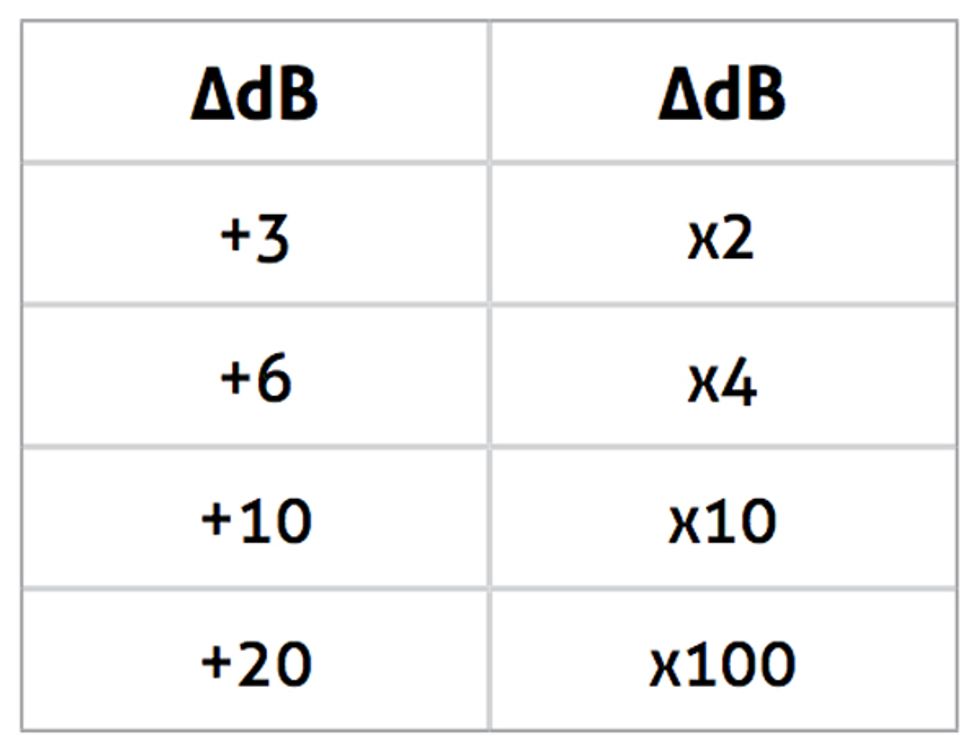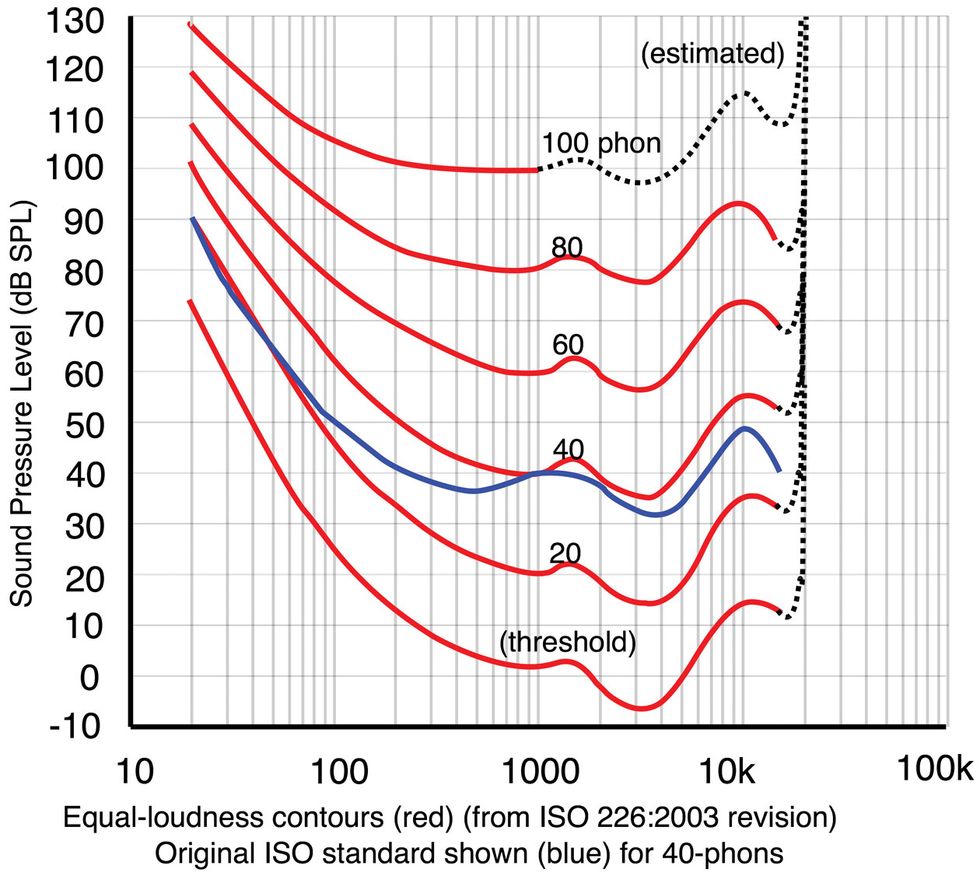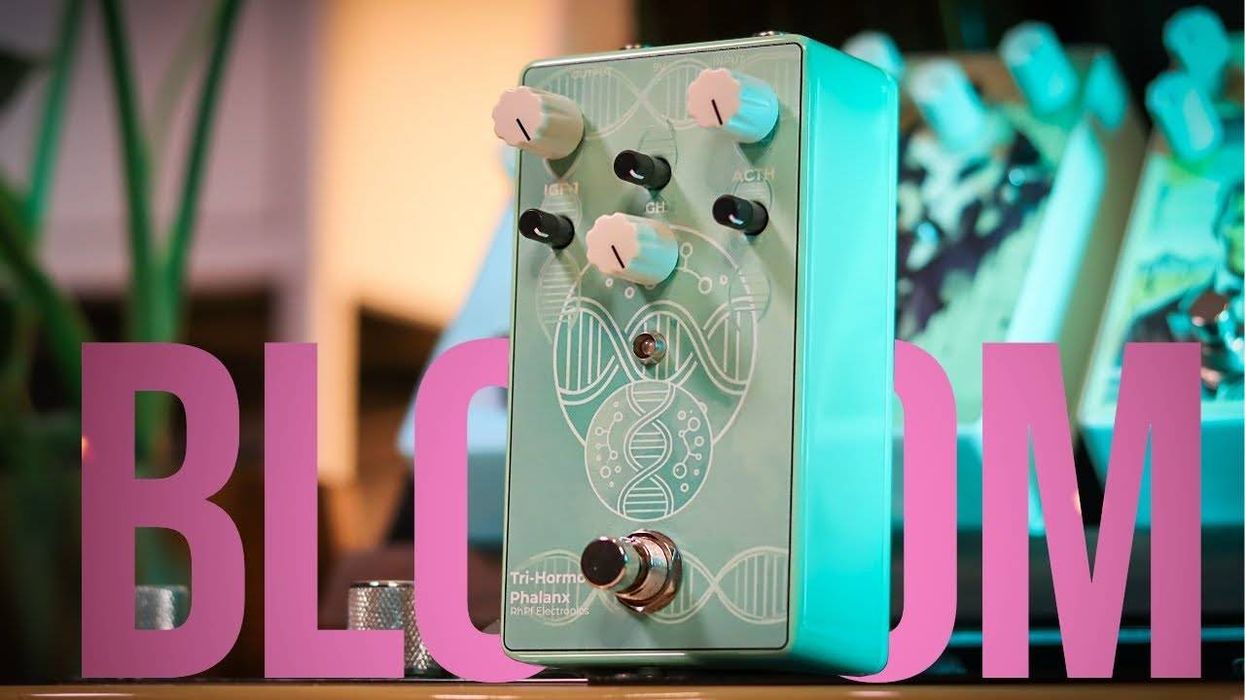Ever wonder why most guitarists playing in a band can get the job done with an amp rated from 30 to 100 watts, while we bassists need to increase that power by as much as a factor of 10 to be heard? Not only do we have to wield heavier instruments during gigs, we’re also schlepping far heavier amps and cabinets before and after the shows. Even with all this firepower, why is it that bassists still struggle to be heard in a band context? And why is it that our lower frequencies fight to cut through?
Basically, all we want is to be perceived as having equal loudness. But being a complex mix of psychological, physiological, and physical factors, loudness can’t be measured directly. That said, loudness is a subjective perception of sound pressure, and sound pressure is something we can measure.
Today, every gigging musician is familiar with the sound pressure level (SPL) or dB meters used at gigs or music festivals to ensure a band’s volume stays within prescribed limits. They’re easy to use, and the most important switch is the one that selects the different weighting curves, which are A, C, and Z, although everyone just uses the A-weighting curve without any further questions.
The A-weighting curve basically corrects for how we perceive the volume or loudness of different frequencies. Since perception can’t be directly measured, researchers measured the differences of sound pressure for several frequencies in mass listening tests, where listeners had to compare and adjust test tones to achieve equal loudness against a reference tone. The results of this averaged mass listening test are called equal-loudness contours (see chart above). In a way, it’s a map of our auditory system’s perception of frequencies.
One reason bassists require low-end power is linked to human biology—the shape of the pinna, our external ear, and how our brains process the information it supplies. The second part of our power quest is technical—the efficiency of the speakers and cabinets, and the frequency-dependent nature of their performance.
These curves shown in the chart are what the A-weighting setting of the SPL or dB meter is taking into account as a way of adjusting for variances in how we perceive sound. (The A-weighting curve on these meters wasn’t meant to be used at the higher volumes found in music venues, but that’s a different story.)

Don’t be confused by the word “phon” in the diagram—it’s simply a term used to indicate pure tones. We’re talking about single test tones here, not the perception of chords, which would only make things even more confusing. No need for that!
At 41 Hz, the low E on a bass competes with the 330 Hz of a guitar’s first string E, and at mild volumes, the bass needs almost twice the sound pressure for an equal perception of loudness. Fortunately, most of us will play at higher volumes around the 100-phon curve, where the ear’s frequency-dependent perception comes into sort of saturation with smaller contrasts among the different frequencies.
Alas, the decibel unit used to measure SPL doesn’t produce a linear scale. In other words, 10 percent more amp wattage doesn’t get us from 100 to 110 dB. Nope: Decibel is a logarithmic scale based on the larger unit “bel,” named after inventor Alexander Graham Bell. The decibel is one tenth of a bel.
The table below shows the correlation between the amp power needed to affect a certain change (∆) in dB. You can see how much the power must increase to close that gap in perceived equal loudness across just a few decibels.
The equal-loudness contour curve points at a roughly 10 dB difference between the perception of the bass low E (41 Hz) and the guitar’s high E (330 Hz). Our table reveals this requires almost 10 times the power from the amp. So, without digging too deeply into the details of acoustics and psychoacoustics, it’s relatively easy to find good reasons for our massively higher power needs when amplifying the low end.






![Rig Rundown: AFI [2025]](https://www.premierguitar.com/media-library/youtube.jpg?id=62064741&width=1245&height=700&quality=70&coordinates=0%2C0%2C0%2C0)












 Shop Scott's Rig
Shop Scott's Rig















































